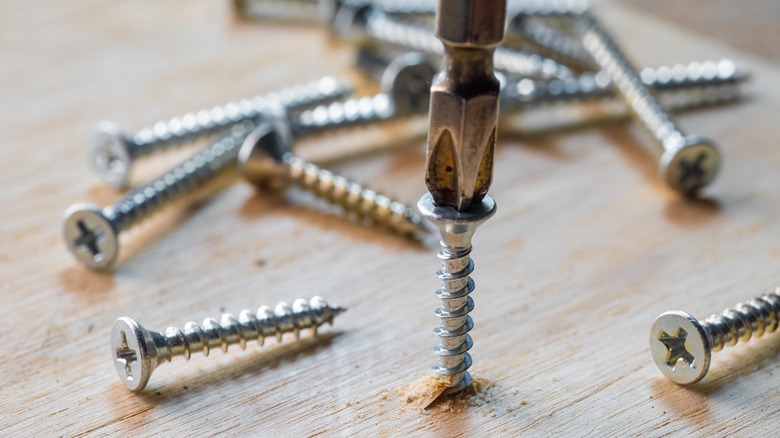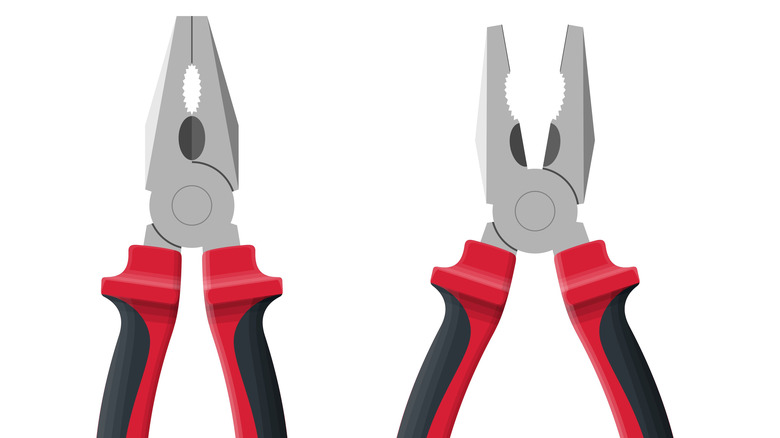
kasarp studio/Shutterstock
By Brad Hill/
There are few better feelings than working with your hands. Whether it’s constructing a new desk you bought from Ikea, hanging pictures all along the walls, or crafting something completely from scratch, it gives such a strong sense of fulfillment. However, there can be occasional hang-ups that cause feelings skewing more toward frustration than fulfillment. Anyone who has done any kind of carpentry has dealt with a stripped screw or two in their time.
Screw extractors aren’t new. They typically look like screws with a reversed thread that you insert into a damaged screw and then help you remove the stripped hardware. Screw extraction pliers are a little different and might be such an underrated tool.
They look like simple pliers, but they’re designed to help remove stripped, rusted, or damaged screws, nuts, and bolts. They don’t require boring a hole into a damaged screw or the use of any other tools. It’s a tool that makes the job significantly easier.
How do screw extraction pliers work?

Photoplotnikov/Getty Images
Extraction pliers are specifically designed with jaws that grasp a screw’s head tight. It doesn’t matter what problem plagues the screw or other piece of hardware, there’s no slippage. Depending on the brand, they can take care of a screw anywhere from 3mm in diameter to 9mm. Simply twist and remove the damaged screw from wherever it’s lodged. While traditional pliers are designed with horizontal lines, screw extraction pliers have specially designed vertical serrations in their jaws, improving the grip strength.
These might be specialized pliers designed for a specific task in mind, but they hardly have only a single purpose. Some brands ensure their screw removal pliers retain traditional plier functions like stripping and cutting wire. This really isn’t one of those tools you should think twice about buying. If you’re a hardcore DIY person, you’ll be thankful you had this in your toolbox.